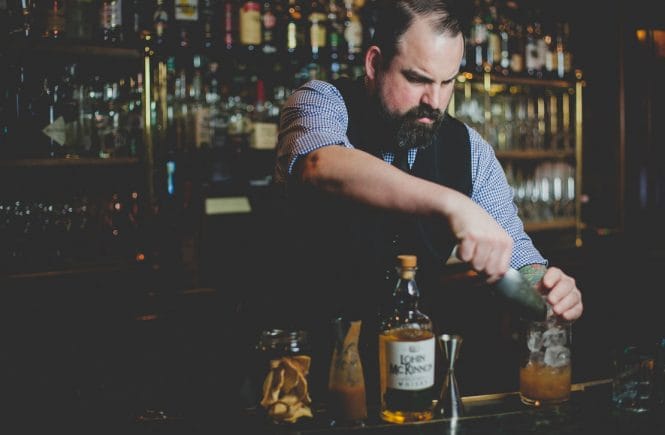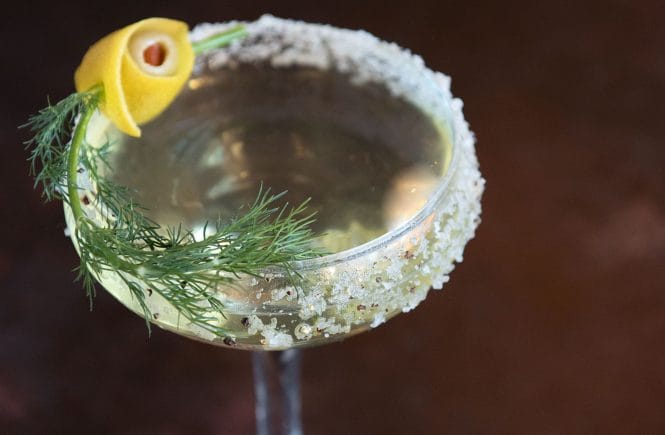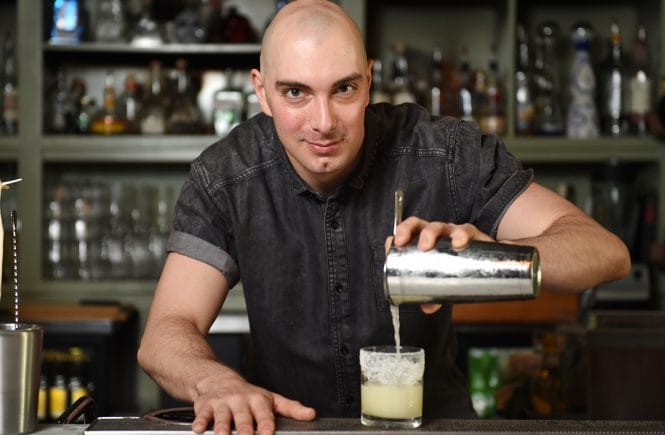A tarnished classic cleans up its act
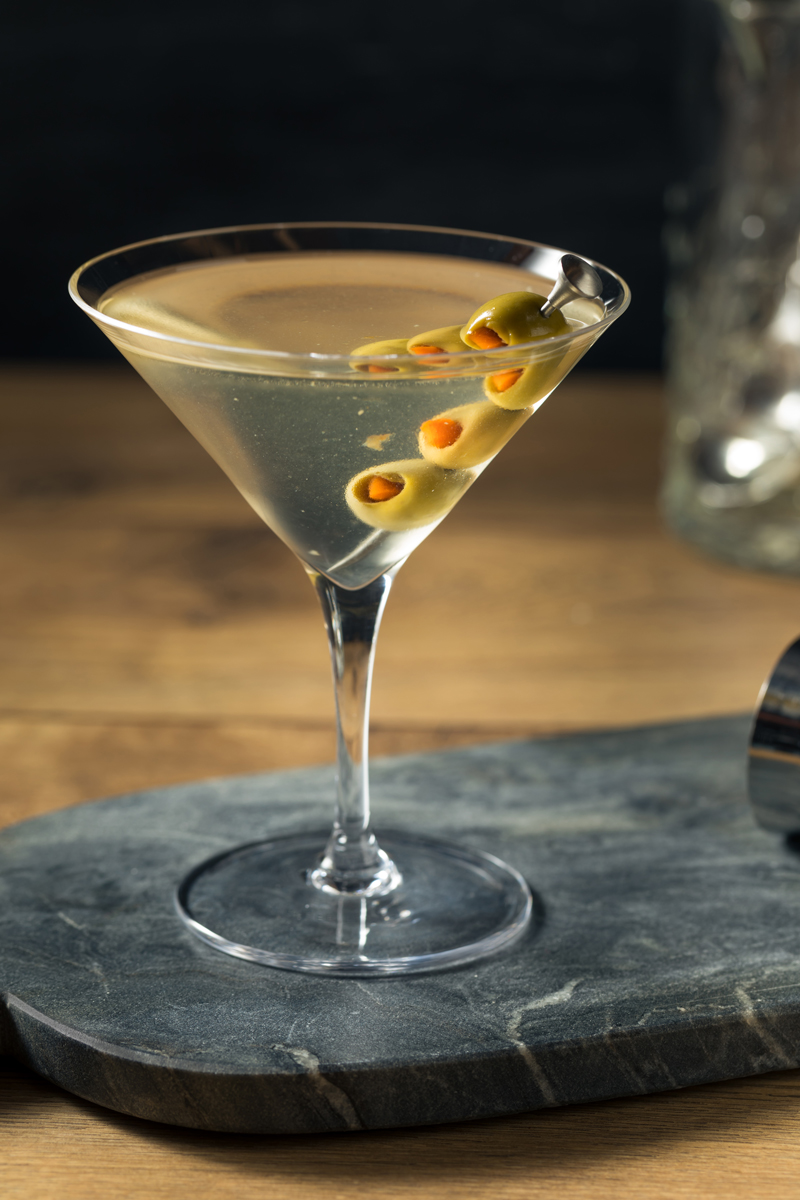
If given the choice, you’d pick potato chips over chocolate. You prefer your cheese well aged and a little blue. When you order sushi, you always need to refill your soy dipping bowl. You can’t wait for mushroom season. And you almost certainly have at least three types of salt in your pantry right now.
If you’re the sort of person who craves savoury and salty flavours, then the Dirty Martini is the drink for you. Luckily, it’s no longer the pariah of the cocktail set.
Well, sort of.
What makes a Martini “dirty” is the addition of olive brine—often murky, sometimes oily, occasionally pulpy—which transforms an otherwise elegant and laser-clean drink into a brackish puddle that could easily be hiding a troupe of sea monkeys. A certain type of drinker enjoys the frisson that accompanies a name with lewd connotations—aficionados tend to like their Martinis “dirtier,” “filthier” and “sluttier” than good taste might dictate. And, like so many drinks popular in the ’80s and ’90s, the Dirty Martini has a bad rep of being made with questionable ingredients and slapdash technique, and enjoyed by those with little taste or finesse.
All of that has added the Dirty Martini to the pantheon of drinks many bartenders despise and may think less of you for ordering. But like the Cosmo and the Amaretto Sour, this punchline of a cocktail is making a comeback thanks to thoughtful craftsmanship and a growing appreciation that its umami notes are, quite simply, yummy.
The first barkeep to muddle olives into a Martini was John O’Connor at New York’s Waldorf Astoria back in 1901, according to cocktail historian David Wondrich. In 1930, olive brine made its first written appearance in G.H. Steel’s My New Cocktail Book. But it was U.S. President Franklin Delano Roosevelt, an enthusiastic if somewhat sloppy cocktailian, who really popularized it during the Second World War. His version comprised two parts gin, one part vermouth and a restrained teaspoon of brine, a relatively elegant concoction that he garnished haphazardly with anywhere from one to four olives.
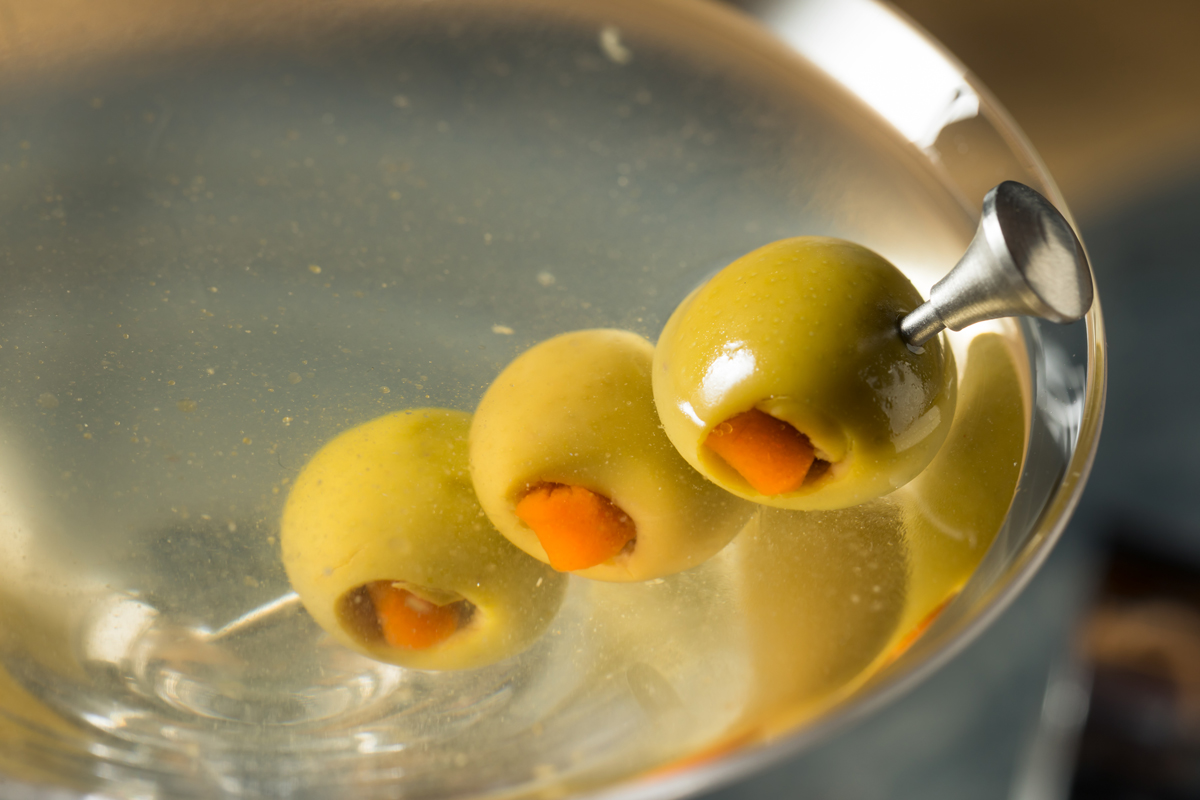
(Note that olives must never be served in even numbers as it is considered extremely bad luck, and poor hospitality, too. As Brad Gadberry writes in his treatise Martini FAQ: “High tradition dictates that you must use an odd number of olives. One olive is fine; so are three—five is excessive. Using two or four olives is a faux pas.”)
In any case, the Dirty Martini’s popularity began to rise after the war. Over time, vodka replaced the gin, the vermouth was left in the back of the liquor cabinet and the amount of olive brine increased as surely as its quality decreased. As the co-owner of New York’s Mother’s Ruin told Punch magazine, “Nobody knew anything. Everything was bad. I’m sure there were some people doing the right things, but I made a lot of Dirty Martinis in the ’90s, and it was literally just vodka and crappy olive juice.”
But now a new generation of bartenders is bringing back the brine, ensuring that we can enjoy this dirty pleasure of a cocktail without feeling too soiled.
—by Joanne Sasvari


